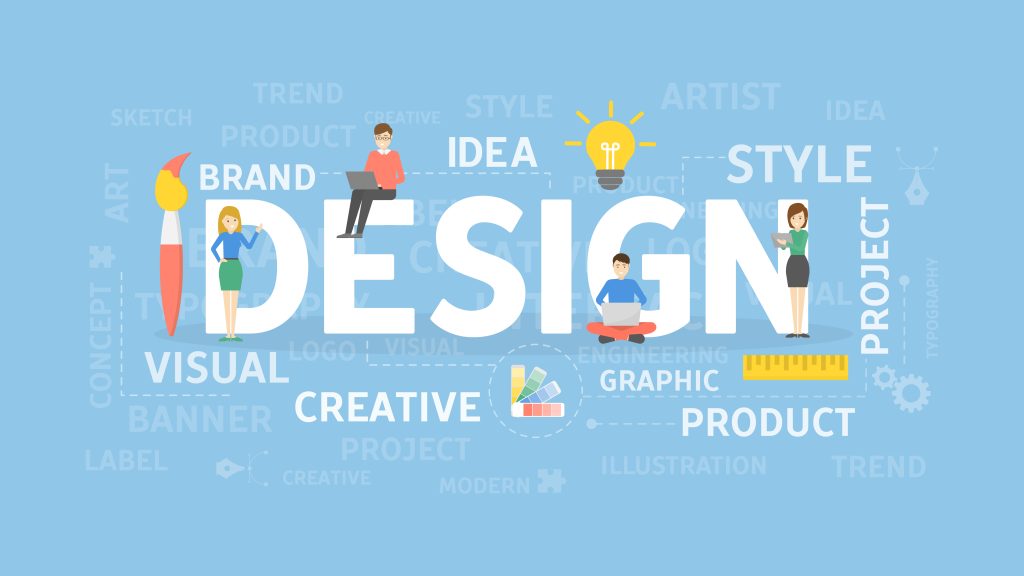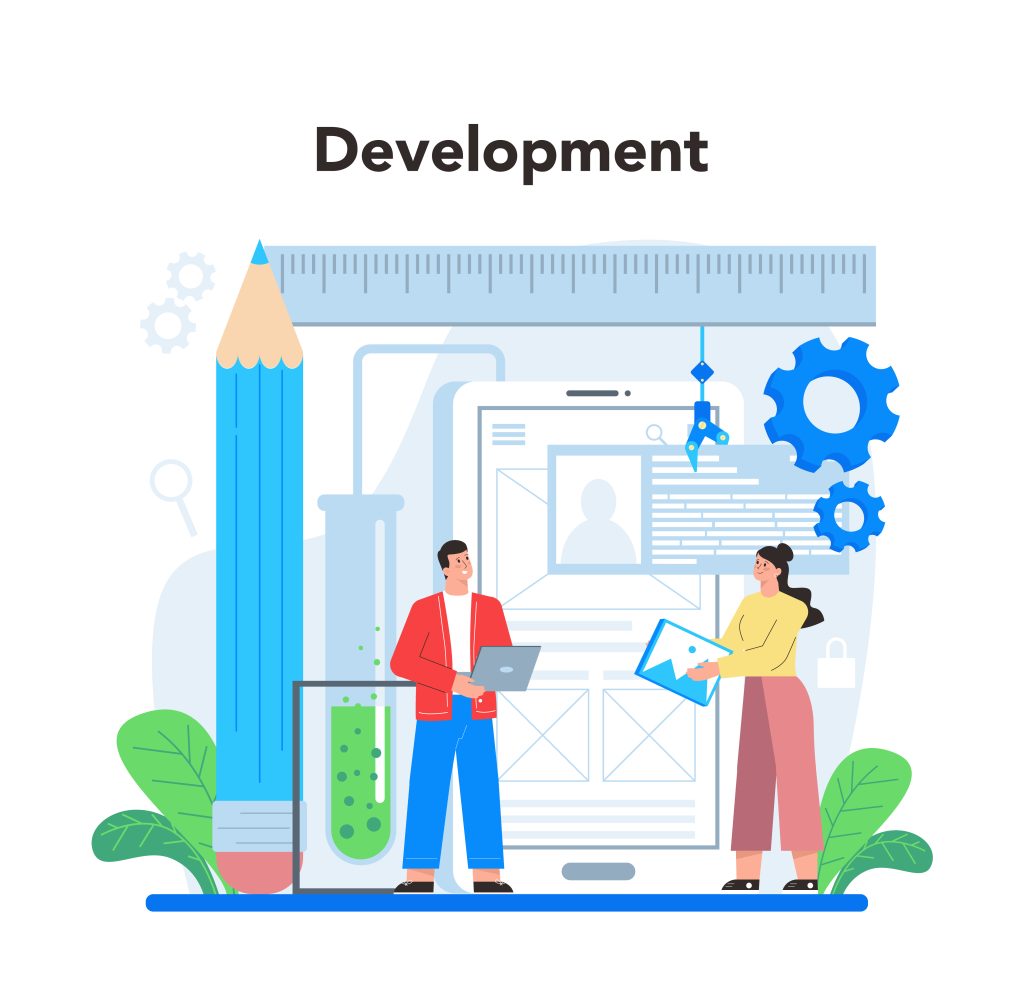How Professional Design Services Transform Digital Products
Poor design costs businesses real money. According to Forrester Research, 50% of potential sales are lost because users can’t find what they’re looking for on websites. This isn’t about aesthetics. It’s about creating interfaces that people can actually use to complete their tasks.
The gap between good and bad design shows up in business metrics. The Design Management Institute tracked companies over ten years and found that design-led businesses outperformed the S&P 500 by 228%. Meanwhile, Google’s research shows that 53% of mobile users abandon sites taking longer than three seconds to load.
Why Research Comes Before Design
Most businesses treat design as a visual exercise. They want something modern without understanding user behavior. This wastes money because it ignores what actually makes design effective.
The Research Process
Professional design starts with understanding users, not creating mockups. Here’s what that looks like:
- User interviews reveal pain points that analytics miss
- Competitive analysis identifies what works in your industry
- Journey mapping shows where users get stuck or confused
- Usability testing validates assumptions before building anything
According to IBM’s research, companies investing in user research during design see development costs drop by 50%. Problems caught in research cost hundreds to fix. The same problems found after launch cost thousands.
Why External Expertise Matters
Internal teams develop blind spots. They know products too well to see what confuses newcomers. Working with a UX design agency brings fresh perspective and cross-industry experience. These teams have solved similar problems repeatedly and know which approaches work in different contexts.
Wireframing and prototyping test ideas cheaply. Interactive prototypes let users navigate proposed solutions before development starts. InVision’s data shows companies using prototypes need 30% fewer post-launch revisions.
Information Architecture
Users leave when they can’t find things. Card sorting and tree testing help designers understand how target audiences organize information mentally. This creates navigation that feels intuitive instead of forcing users to learn your internal logic.
UI/UX Design That Drives Business Results
The return on design investment is measurable. Nielsen Norman Group found that every dollar spent on UX returns $100 in value, creating a 9,900% ROI.
Conversion Rate Impact
Design quality directly affects revenue:
- 200-400% conversion increases from better UX according to Forrester
- For a $500,000/year business, that’s $1-2 million additional revenue
- Same traffic, same ad spend, better results
Mobile Performance
With 58% of web traffic coming from mobile devices, responsive design determines success:
- Google ranks mobile experience first
- Poor mobile design kills search visibility
- Users expect seamless experiences across devices
Loading Speed
According to Google’s research:
- 53% of mobile users abandon slow sites
- Each extra second reduces conversions by 7%
- Professional designers optimize images and minimize unnecessary elements
Accessibility Standards
Following WCAG guidelines expands your market:
- 15% of the global population has disabilities
- Accessible design improves usability for everyone
- Captions help in noisy environments
- High contrast helps in bright sunlight
- Clear navigation helps users in a hurry
Brand Consistency
Lucidpress research shows consistent branding increases revenue by 23%. When users see the same visual language across your website, app, and emails, they build trust faster.
How Design Decisions Impact Business Metrics
Companies prioritizing design outperform competitors. McKinsey’s analysis of 300 companies showed design-led businesses achieved twice the revenue growth of industry averages.
A/B Testing for Optimization
Testing removes guesswork:
- Companies doing regular tests see 20% higher conversions according to Optimizely
- Test one element at a time: headlines, button colors, layouts
- Small improvements compound into major gains
Continuous Improvement
Leading companies treat design as ongoing work, not one-time projects:
- 10-15% annual conversion rate improvements
- Regular usability testing identifies friction points
- Analytics show where users struggle
Customer Retention
Bain & Company research proves that increasing retention by 5% boosts profits by 25-95%. Poor usability drives users to competitors even when you offer better features.
Selecting Design Services That Deliver

Portfolio Evaluation
Look beyond aesthetics:
- Case studies with actual metrics matter most
- Did signups increase by a specific percentage?
- Did support tickets decrease?
- Numbers prove capability better than pretty mockups
Process and Methodology
Quality teams demonstrate clear processes:
- They ask about business goals before proposing solutions
- They explain their methodology transparently
- They set realistic timelines
- They involve you in key decisions
Technical Expertise
Modern design requires technical knowledge:
- Understanding responsive frameworks
- Performance optimization skills
- Knowledge of development constraints
- Ability to collaborate with developers effectively
Budget Considerations
Professional website redesigns typically cost $30,000-50,000. Complex applications requiring custom research cost more. Remember the 9,900% ROI from Nielsen Norman Group’s research. A $40,000 investment returning $400,000 annually justifies itself quickly.
Timeline Expectations
Comprehensive projects need 8-12 weeks minimum for:
- Research and discovery
- Design and iteration
- Testing and refinement
- Implementation support
Current Developments in Design

Voice Interfaces
Voice search is growing rapidly:
- More natural interaction patterns
- Requires rethinking information architecture
- Content must work conversationally, not just visually
Dark Mode
Android Authority data shows 82% of smartphone users enable dark mode regularly. Proper implementation requires:
- Maintaining contrast ratios
- Ensuring readability in both themes
- Testing all UI elements in dark mode
Purposeful Animation
Micro-interactions improve usability when used strategically:
- Confirm actions registered
- Guide user attention
- Provide feedback during processes
But Baymard Institute research found 35% of users find excessive animation distracting. Use motion to enhance clarity, not as decoration.
Privacy-Focused Design
Users increasingly value privacy:
- Transparent data controls build trust
- Minimal data requests improve conversions
- Clear privacy policies reduce abandonment
Measuring Design Effectiveness
Essential Metrics to Track
Before redesigning, establish baselines:
- Conversion rate: percentage completing desired actions
- Task completion rate: users successfully finishing processes
- Time on task: how long actions take
- Bounce rate: visitors leaving immediately
- Customer satisfaction score: user experience quality
A/B Testing Best Practices
HubSpot’s research shows companies doing regular A/B tests see 20% higher conversion rates:
- Test one variable at a time
- Run tests long enough for statistical significance
- Document results for future reference
- Implement winners and test next elements
Behavioral Analytics
Tools reveal what metrics miss:
- Heatmaps show where users click
- Scroll maps reveal how far users read
- Session recordings expose confusion points
- Form analytics identify abandonment triggers
User Satisfaction Measurement
Net Promoter Score predicts growth:
- Scores above 50 indicate strong satisfaction
- Scores above 70 represent exceptional performance
- Track monthly to catch problems early
Task Completion Standards
Industry benchmarks suggest:
- Task completion should exceed 80%
- Lower rates signal design friction
- Each percentage point costs real conversions
Making Design Investment Pay Off
Professional design services deliver measurable returns through strategic approaches. Start with clear business objectives. Whether increasing signups, improving retention, or reducing support costs, different goals require different design solutions.
Budget Allocation
While costs vary by scope, remember the 9,900% ROI from Nielsen Norman Group. Quality design pays for itself through:
- Increased conversion rates
- Reduced development costs
- Lower support ticket volume
- Higher customer retention
Ongoing Optimization
The best results come from continuous improvement:
- Regular testing identifies opportunities
- User feedback guides priorities
- Analytics reveal changing behavior
- Iteration maintains competitive advantage
Gain Competitive Advantage Today!
Design quality determines winners in competitive markets. When functionality is similar across options, user experience becomes the deciding factor. Investing in professional design isn’t about aesthetics. It’s about making products work better, which directly translates to business growth and customer loyalty.
